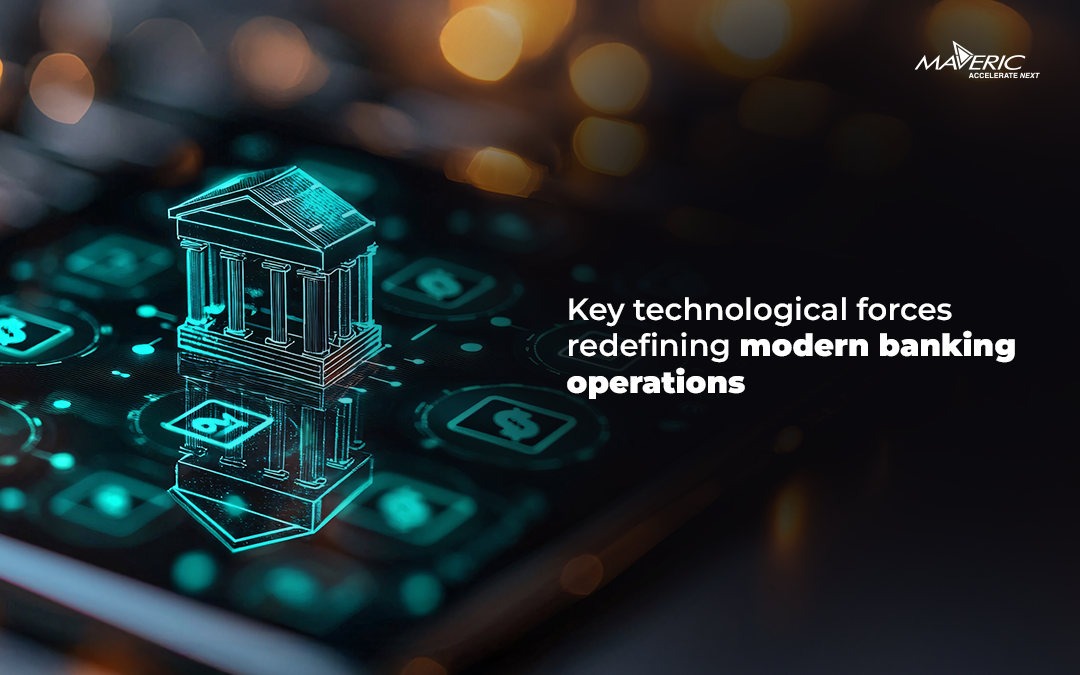The implementation of digital technologies to maximize the value of digital technologies is referred as digital transformation. The four main aspects of digital transformation are Customer satisfaction (CX), Data & Analytics, Cloud Computing, and Mobility. When it comes to digital transformation, the entire organization must adopt a new mindset to accomplish the planned benefits. Employing teams proficient with technology is not enough; there is a need for an outside-in thinking that comes from domain specialists like Maveric Systems.
Delivering a better customer experience needs a deeper understanding of customer expectations and challenges. This insight layer comes from advanced analytics that banks and FIs are increasingly investing in. Especially with the proliferation of 5G technology and smart devices, legacy banks are embracing omni channel banking practices.
What does the transition from conventional to digital platforms look like? The blog covers the pertinent aspects for digital transformation when it comes to retail banking.
Banks must implement improvements to improve customer experience.
Technology improvements are affecting consumer expectations and behaviour. More than half (53%) of financial institution customers have switched to different primary financial providers, and a further 9% said they are thinking about doing so. The findings come from an Everfi Report. The conclusion? If banks want to keep their current clients, they must give them what they want.
Customers anticipate FIs to be accessible 24/7. As per a recent Deloitte survey, customers were using digital banking channels including internet and mobile apps more frequently even before the pandemic. As more customers started utilizing digital channels during the epidemic, this trend grew more pronounced. Needless to say, FIs must invest more in digital solutions as the use of digital channels rises.
Four Key Technologies Used for Digital Transformation in Retail Banking
-
Digitization
Digitization is the first step in digital transformation. A business that primarily uses branches to serve consumers must first improve its sub optimal mobile and web banking offerings. Companies in the financial services industry should adopt cutting-edge technology rather than outdated technology as they digitize. Although iterative progress has customers thrilled, it is irrational to not use the most advanced, mature technology in the digital transition.
-
Automation
A McKinsey study says, 20% of corporate activities can be automated with current technology. Robotic Process Automation can assist enterprises because it eliminates human error, procedures should be made more efficient. It also reduces operating costs by reducing the staff and concentrating on more crucial, decision-intensive tasks. Then there process mining technologies that are used to find opportunities for process improvement.
-
Machine learning and advanced analytics
Data analysis can give insights about consumer behaviour, enabling banks to enhance the customer service they offer. Personalization is one frequent analytics application in the banking industry. Any banking product must first be promoted to the appropriate customers. By doing so, FIs can reach out to the appropriate consumer at the right time with the right message and offer through the right channel by utilizing advanced analytics.
-
Blockchain
Blockchain is increasingly being used across the retail banking industry. From investment management, international trade, trade finance, and capital markets, this new trend is catching on speed. One reason is that it decreases the need for intermediate banks by reducing costs, increasing transaction speed, providing transparency, and reducing fraud.
Conclusion
The banking sector is changing quickly in the modern era. In addition to a difficult macroeconomic environment, banks must deal with constantly changing client behaviours and raised expectations in a world that is becoming more and more digital.
Through cutting down on friction in industry value chains, fostering innovative ecosystems, and adopting innovative business strategies, new kinds of competitors are catering to these demands. At the same time, the landscape of financial services continues to be impacted by the continuing explosion of data, increased compliance requirements, expanding security threats, and shifting worker demographics. Financial institutions must be adaptable enough to foresee change and thrive in it.
About Maveric
Starting in 2000, Maveric Systems is a niche, domain-led Banking Tech specialist partnering with global banks to solve business challenges through emerging technology. 3000+ tech experts use proven frameworks to empower our customers to navigate a rapidly changing environment, enabling sharper definitions of their goals and measures to achieve them.
Across retail, corporate & wealth management, Maveric accelerates digital transformation through native banking domain expertise, a customer-intimacy-led delivery model, and a vibrant leadership supported by a culture of ownership.
With centers of excellence for Data, Digital, Core Banking, and Quality Engineering, Maveric teams work in 15 countries with regional delivery capabilities in Bangalore, Chennai, Dubai, London, Poland, Riyadh, and Singapore.











